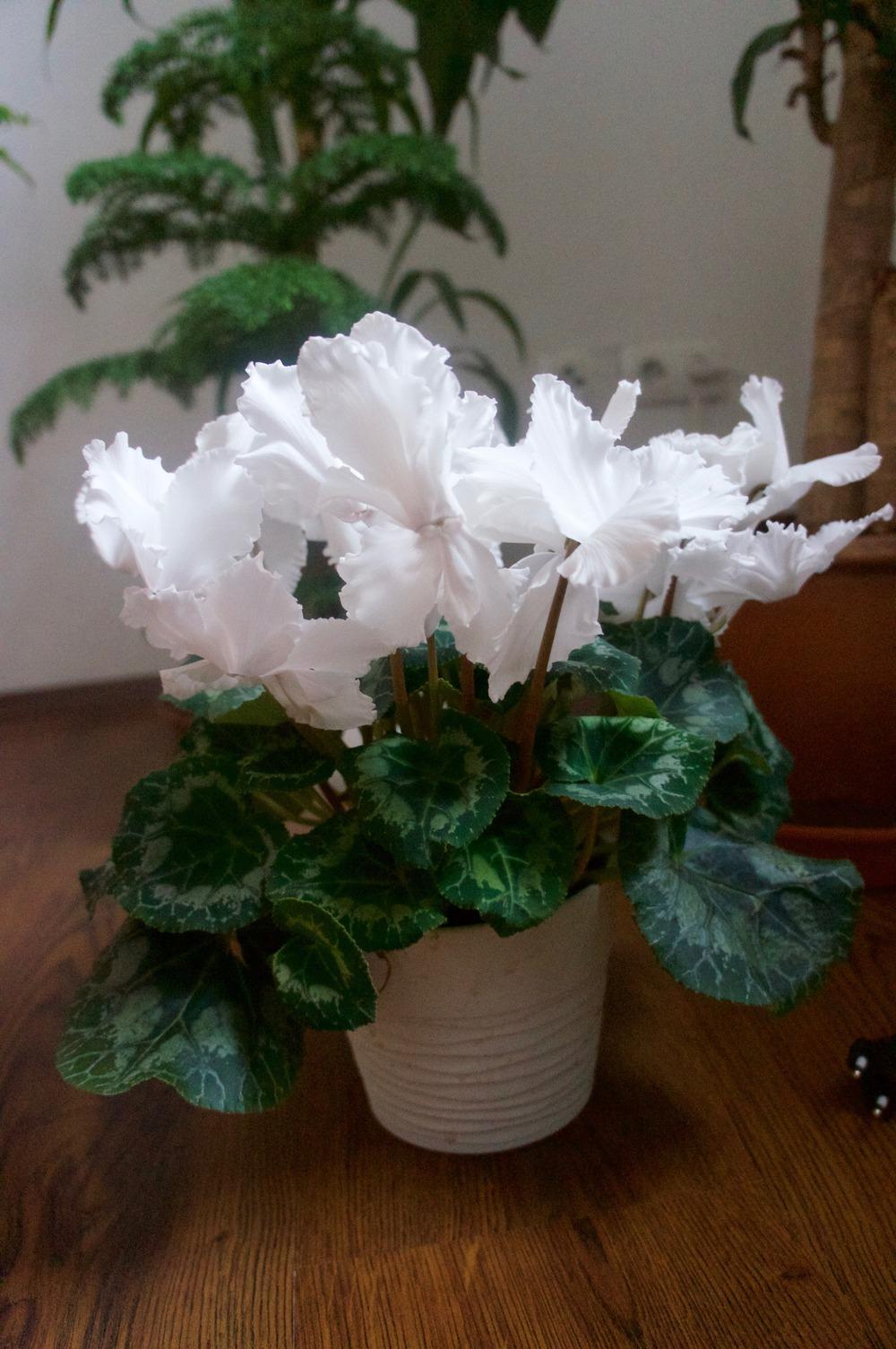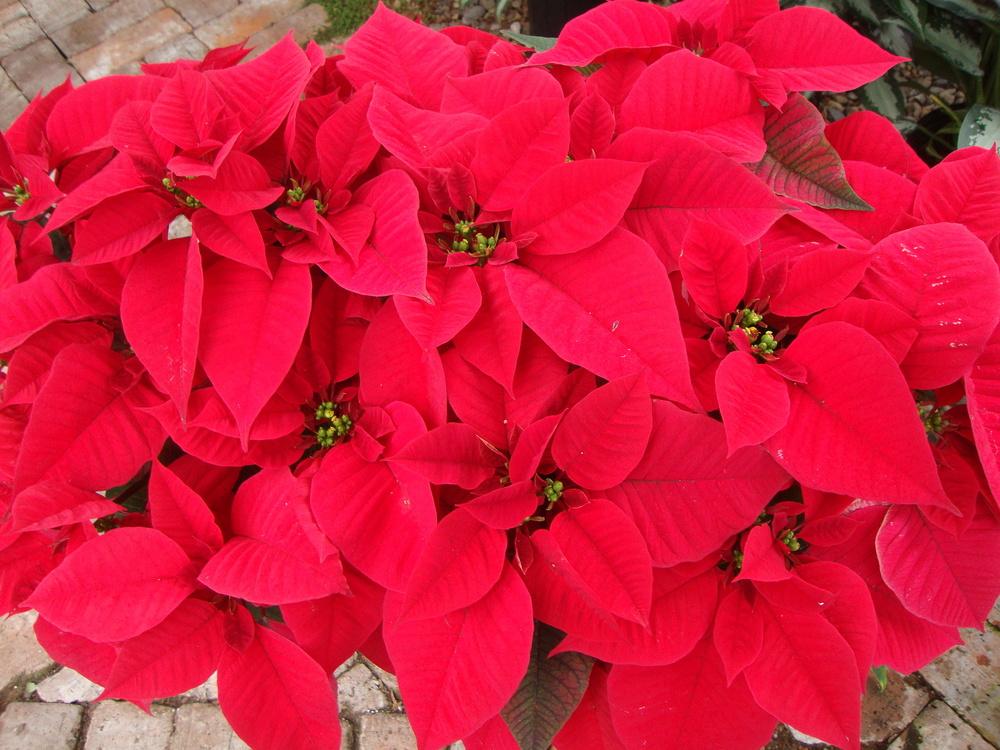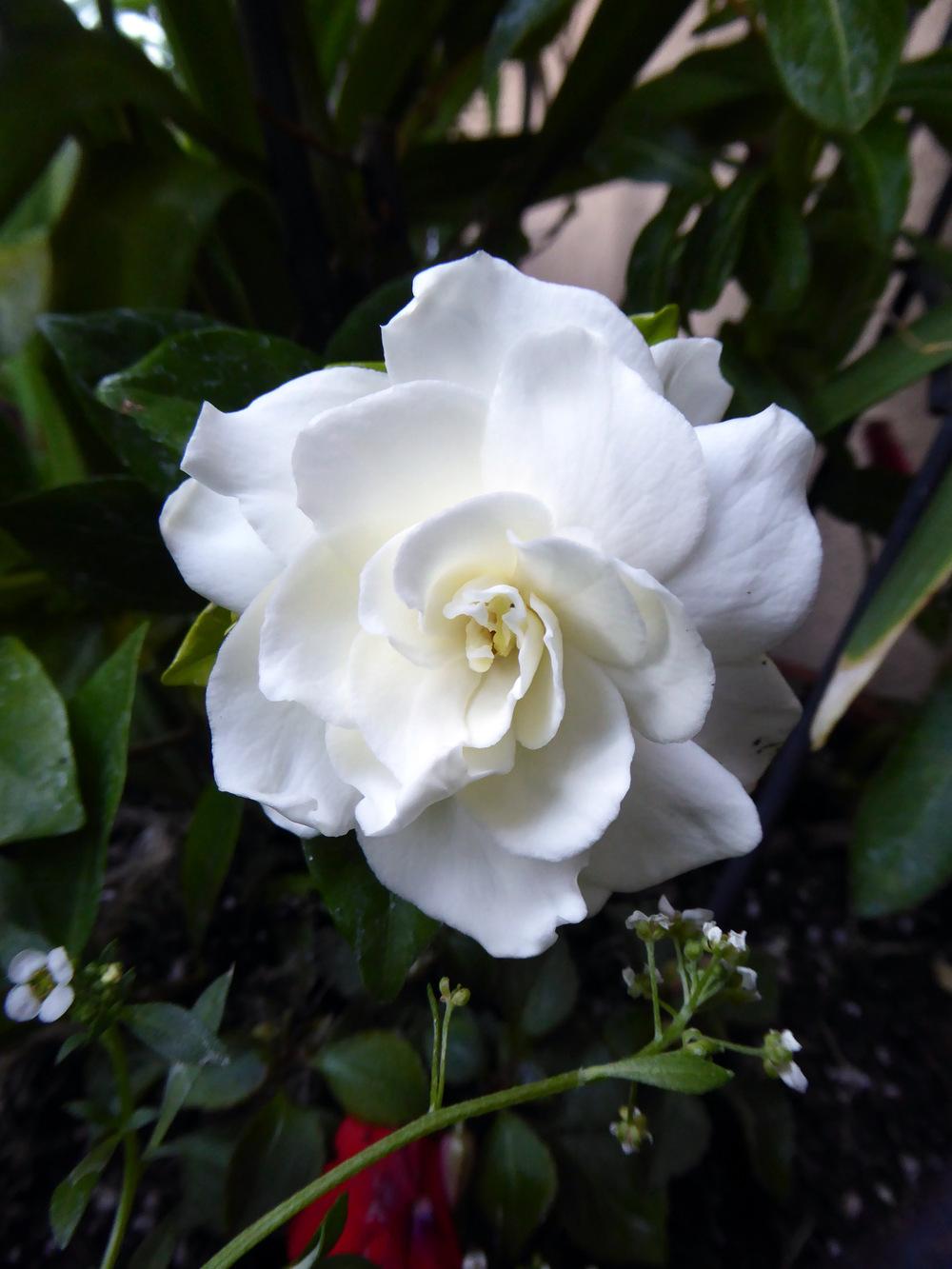At the holidays, I like to give and receive flowering houseplants. Weeks later, however, after the fruitcakes and candy-canes are gone, these once-gorgeous gifts often struggle to survive, much less to bloom. So here's a seasonal-care guide that will keep those gift plants looking their best year-round.
Gift-Plant Care Rebloom Ratings
Some holiday plants stay healthy and flower well all year, but others are difficult to grow. Some types are best left to nurseries, and certain plants just won't survive after flowering. I rate plants as easy, moderate, or difficult to make bloom again. An ″easy″ rating is just that: You can hardly stop the plants from re-blooming, though they may bloom unexpectedly, because your gift may have been forced to bloom for holiday sale. ″Moderate″ means that if you adjust the growing environment, re-bloom is certain. A ″Difficult″ rating means a plant requires daily adjustments to light and temperature, and even then it may not flower. Before we explore the requirements of each plant, however, let's review the care of indoor plants.
Water Evenly
One reason plants fail to bloom and thrive is excessive watering. Most flowering houseplants require moist, but not wet, soil. Saturate the soil with room-temperature water in the morning. This allows inadvertently moistened foliage to dry quickly and so prevents leaf diseases. Cold water shocks plants and damages African violets' leaves.
If water drains out immediately, the plant is rootbound, and the rootball may be dry and compacted. To revive the plant, submerge the whole pot in a tub of water to soak the rootball. If the water takes more than five minutes to drain, the drainage holes may be clogged or the soil mix too heavy. Repot with fast-draining soilless potting mix.
Water plants like cyclamens and African violets from the bottom. Place pots in a tray of water, and let the soil naturally soak up the water. However, once the soil is saturated, don't leave the pots in the water. Excessively soaked soil may lead to root rot.
Turn on the Lights
Flowering houseplants often don't rebloom because of insufficient intensity of (and length of exposure to) light, especially in winter. Without adequate light, plants will become leggy, and they won't flower. Provide optimal light in winter, especially in regions north of the 38-degree latitude line roughly from Washington, D.C., to San Francisco. In these regions, place plants in a south-facing window with filtered sunlight. Move the plants back to their usual location by March. In the southern half of the country, keep plants in their preferred locations year-round. However, in both regions, if you notice leggy growth and few flowers, consider placing the plants under full-spectrum grow lights.
Temperature
Indoor temperatures of 55 to 70 degrees F. are usually adequate for most flowering houseplants, though tropical emigrants such as holiday cactus and gardenia need cooler temperatures (60 to 65 degrees F.) to set buds. However, avoid placing plants near drafty doors, uninsulated windows, and heat sources.
Fertilizing
The best fertilizer for most flowering houseplants is a timed-release one that supplies nutrients to the plant every time you water. Complete fertilizers for houseplants work well; apply fertilizer, twice monthly, spring and summer. Once a month, flush the pots for a few minutes until water drains from the holes to remove any built-up fertilizer salts.
Humidity
Many flowering houseplant species are accustomed to high year-round humidity. Natural humidity levels in spring, summer, and fall are adequate in most regions except desert areas. However, plants require more moisture in winter, when heated indoor air dries out. Humidity levels should be at least 40 percent. Run a humidifier near the plants, or group the plants together in a draft-free room on a 2-inch layer of pebbles in a basin of water. The water should not touch the pots. The closely spaced plants and the evaporating water help keep the humidity high. Misting plants provides only temporary moisture and doesn't significantly alter the overall humidity levels.
Pests
If you move plants outdoors in summer, carefully check them for insects such as mealybugs and aphids when you bring them indoors in fall. Control pests with insecticidal soap or horticultural oil.
Care Guide for Flowering Houseplants

Winter care: Place in an east-facing window with bright, indirect light. Cyclamen crowns and foliage are susceptible to fungal rot if too wet, so water only from the bottom. For best flowering, keep humidity high and temperatures cool (60 degrees F.).
Spring care: After flowers fade, gradually withhold water until foliage withers. Store pots in a cool, dry location or remove corms from soil, and store at 40 to 50 degrees F. in a perforated plastic bag filled with dry peat moss.
Summer care: In July, repot the corms in soilless potting mix, leaving half of each corm above the soil surface. Place the pot outdoors in a shaded location; when new growth begins, fertilize the cyclamen with all-purpose houseplant food, and keep the soil evenly moist.
Fall care: Bring the pot indoors before first frost. To induce flowering by Christmas, place in an east-facing window with 55 degrees F. temperatures.
Poinsettia (Euphorbia pulcherrima)

Winter care: Place the plant in an area with a half-day of direct sun, and water only when the soil is dry.
Spring care: As side shoots develop, prune back old branches to where new growth starts, and repot with fresh soilless potting mix. Begin fertilizing with all-purpose houseplant food.
Summer care: After last frost, place plant outdoors where it receives morning sun. Sink pot into ground. Keep well watered, and prune off growing tips twice a month to create bushier plants. Continue fertilizing.
Fall care: Bring plant indoors in September before first frost. To induce flowering, give the plant direct sun or artificial light each day, and 14 hours of uninterrupted dark each night, beginning in early October. Keep the soil moist, and stop fertilizing. Color should form on bracts in six to eight weeks.
Gardenia (G. jasminoides, also called G. augusta)

Winter care: To induce flowering and stop bud drop, keep humidity high and night temperatures between 60 and 65 degrees F. Gardenias need 4 to 6 hours of direct light daily to flower. Water only after the top inch of soil is dry. Avoid drafts, which cause leaves to yellow and drop.
Spring care: As new growth appears, fertilize with a complete acidifying fertilizer with micronutrients, such as Mir-Acid. Pinch new growth to shape plant. Repot if necessary.
Summer care: Place outdoors in part shade. Continue fertilizing and watering.
Fall care: Bring the plant indoors for increasingly longer time periods before frost to reduce the shock caused by the low light levels and low humidity.
Amaryllis (Hippeastrum hybrids)
Temperatures: 65 to 70 degrees F. day, 50 to 60 degrees F. night.Rebloom rating: ModerateWinter care: Place in a bright location but out of direct sun while blooming. Long, leggy flower stalks indicate insufficient light. Keep soil evenly moist during flowering. Stake stalk if taller than 18 inches.
Spring care: Cut off dead flower stalks to 2 inches above the bulb. Let the bulb dry slightly between waterings.
Summer care: After the last frost, bury the bulb, pot and all, in a location where it receives morning sun. Fertilize with all-purpose houseplant food as leaves continue to grow. Amaryllis flowers best if potbound; repot every three to four years.
Fall care: In September, lift the pot out of the ground, stop watering, and store in a cool (50 degrees F.) dry place, allowing the foliage to die. Six weeks before you want flowers, bring the pot into a warm (70 degrees F.), brightly lit room. When new leaves emerge, resume watering. Butterfly amaryllis and other species do not require a dormancy period.
Kalanchoe (K. blossfeldiana)
Temperatures: 70 to 75 degrees F. day, 50 to 60 degrees F. nightRebloom rating: DifficultWinter care: Give plants at least a half-day of bright, direct sun. Let pots dry out between watering. Kalanchoe thrives in dry air.
Spring care: Repot after flowering, pinch new growth to encourage new leaves, and begin fertilizing with all-purpose houseplant food when you see new growth.
Summer care: After last frost, move plant outdoors to a partly shaded location. Continue fertilizing and watering.
Fall care: Move plant indoors before first frost. To induce bud set, allow plant to go dormant in September by providing cool (50 degrees F.) conditions and 14 hours of uninterrupted darkness each night for two months.
Azalea (Rhododendron species, Belgian, Southern Indica, and Kurume hybrids)
Temperatures: 60 to 68 degrees F. day, 45 to 55 degrees F. nightRebloom rating: ModerateWinter care: When flowering, azaleas need 4 hours of bright, filtered sunlight in a south-facing window. Flowers last longest at cool (55 degrees F.) temperatures. High humidity is also important for flowering and to prevent spider mite infestations. Keep soil evenly moist.
Spring care: Once flowers drop, fertilize with a complete acidifying fertilizer with micronutrients. Keep the plant in bright light and water it well.
Summer care: After danger of frost has passed, move the plant outdoors to a partly shaded location. To keep the plant bushy, pinch off the top few inches of new growth. Keep the plant well watered, and continue fertilizing.
Fall care: Greenhouse azaleas are not reliably hardy outdoors north of zone 8, so bring plants indoors before temperatures drop into the low 20s. To induce flowering by Christmas, move the plant indoors to a bright, cool (55 degrees F.) room until November. Stop fertilizing, but keep soil evenly moist.
African Violet (Saintpaulia ionantha)
Winter care: Place plants in an east-facing window or under grow lights. Avoid watering foliage, and keep soil evenly moist and humidity high. Prevent exposure to drafts, or leaves will yellow. (Small, light green, crinkled leaves indicate too much sun; poor flowering and dark green leaves with long leaf stalks indicate insufficient sun.)
Spring care: Repot only when potbound using a porous, African violet soil mix. Take stem or leaf cuttings. If plants were in direct winter sun, move them to a shadier spot. Fertilize with special African violet fertilizer (available at most garden centers).
Summer care: Continue watering and fertilizing. If plants are grown in a windowsill, wash the leaves monthly with tepid water, allowing them to dry before putting the plant back in the sun.
Fall care: Continue to water and fertilize. In northern regions, move plants to a bright window or under grow lights. Propagate by stem or leaf cuttings.
Holiday Cactus (Schlumbergera bridgesii or S. truncata)
Temperatures: above 70 degrees F. day, 55 to 65 degress F. nightRebloom rating: EasyWinter care: Place the plant where it will have a half-day of bright, indirect sunlight or curtain-filtered direct window light. Keep the soil evenly moist and provide high humidity levels.
Spring care: Once flowering finishes, begin fertilizing with all-purpose houseplant food, and keep soil moist.
Summer care: After last frost, move the plant outdoors to a shady location. Continue watering and fertilizing.
Fall care: Bring indoors before first frost. Let soil dry out slightly between waterings. To induce bud set: Starting in September, expose the plant to 5 to 6 weeks of short days (less than 12 hours of daylight and without artificial room lighting or cool (below 55 degrees F.) temperatures. Once buds form, continue regular watering and treatment.
Charlie Nardozzi is a senior horticulturist at National Gardening.
Photography by National Gardening
 Charlie Nardozzi is an award winning, nationally recognized garden writer, speaker, radio, and television personality. He has worked for more than 30 years bringing expert gardening information to home gardeners through radio, television, talks, tours, on-line, and the printed page. Charlie delights in making gardening information simple, easy, fun and accessible to everyone. He's the author of 6 books, has three radio shows in New England and a TV show. He leads Garden Tours around the world and consults with organizations and companies about gardening programs. See more about him at Gardening With Charlie.
Charlie Nardozzi is an award winning, nationally recognized garden writer, speaker, radio, and television personality. He has worked for more than 30 years bringing expert gardening information to home gardeners through radio, television, talks, tours, on-line, and the printed page. Charlie delights in making gardening information simple, easy, fun and accessible to everyone. He's the author of 6 books, has three radio shows in New England and a TV show. He leads Garden Tours around the world and consults with organizations and companies about gardening programs. See more about him at Gardening With Charlie.